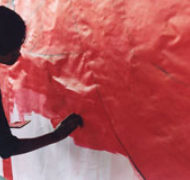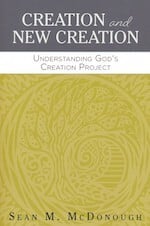Art May Not Be Truth, But It Tells It
Blog / Produced by The High Calling
They say a picture is worth a thousand words, and for the artists, this may never become cliché. We walk around in constant wonder, proving it true again and again. Art brings the eternal into the boundaries of time. Art describes the world to the world in a visceral, earthbound fashion that invites even the simplest to understand the explanation.
Photographers write stories with their cameras. Designers craft identities with pixels and code. Poets distill their thousand words to just a few lines that can span history, cross the universe, and catch a falling tear.
In our overloaded information age, we’re often presented with conflicting interpretations of truth. The world is beginning to look to the artists to tell them what is real.
It is not surprising that Instagram became one of the most popular iPhone apps of 2011, or that sites like Tumblr and Pinterest have rocketed to popularity. These modern tools are communicating in a language artists know and speak every day—and it is catching on.
But one doesn't have to be a photographer or poet to know and speak this language. All that is required to produce art is a willingness to respond both to the beauty of being alive and to the God who breathes life into us. If a person can access wonder, a person can make art.
The art we offer the world—that you can offer the world—may be worth a soul, and nobody can make a cliché out of that.
-----
Earlier this month, Tweetspeak Poetry shared a “resolutions” challenge for the poets among us. Network member Monica Sharman responded with "...resolves," an unresolved poem that leaves her readers with her exact meaning:
The notes are most in harmony
when frequencies are multiples
of one another, having common
factors, never having to
abut, and when reduced
to their simplest, their bare
primes coincide and strike complacent
chords in resolution—thirds or fifths,
harmonic intervals sufficient to
elude tension, being safe
at distances where no ache
inspires desire for motion, no
suspended chord requires release,
no syncopation rocks
any boat. That music sits
content without movements.
But when a song makes hands play
adjacent keys, and fingers have
to touch, there comes an expectation
in the conflict; the suspended
chord wants forward
movement, and a beauty
rises from the song that
never quite
The High Calling partners with places like International Arts Movement, High Calling Focus, and Tweetspeak Poetry to encourage artists as they interact in both Christian and secular fields. Our hope is to foster more of this wonder-inspired art. Here are two opportunities to participate.
Random Acts of Poetry
Tweetspeak's February prompt for us is “Red." Poets, make that color tangible and bring us to the eternal by leaving your poems at the T. S. Poetry Press Facebook Wall by Wednesday, February 22. Your poem could be featured here at TheHighCalling.org, at Tweetspeak, or in Every Day Poems.
PhotoPlay
We also challenged network photographers to schedule a meeting with another photographer and create a photography project to do together. The results of this prompt are due by February 8, so there is still time to participate! Upload a photo collage of your work to the High Calling Focus Flickr Group for a possible feature here at TheHighCalling.org. Make sure to tag the image with “PhotoPlay 22.” (NOTE: Only tagged images are eligible for feature.)
Some helpful collage tools:
Mosaic Maker
Kodak Gallery
Image by Nadya Peek. Used with permission. Sourced via Flickr. Post by Kelly Sauer.





